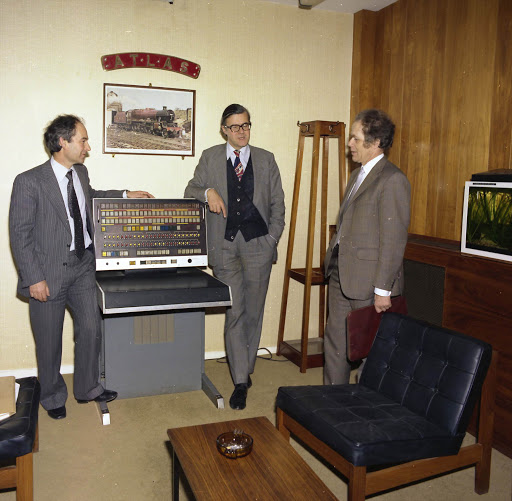
by Admin | Nov 26, 2021 | Chronicles, News
This week in The History of AI at AIWS.net – the Alvey Programme was launched by the British government in 1983. It is a project developed in response to Japan’s own Fifth Generation Computer project. There was no specific focus or directive, but rather the program was to support research in knowledge engineering in the UK.
Originally, the UK was invited to Japan’s FGP, and they created a committee chaired by John Alvey, a technology director at British Telecom. In the end, they rejected Japan’s invitation and formed the Alvey Programme. John Alvey was not involved in this initiative itself though.
This project was created in response to Japan’s Fifth Generation Computer program, funded by the Japanese Ministry of Trade and Industry in 1982. The goal of this program was to create computers with massively parallel computing and logic programming and to propel Japan to the top spots in advanced technology. This will then create a platform for future developments in AI. By the time of the program’s end, the opinion of it was mixed, divided between considering it a failure or ahead of its time.
Another program that rivalled the Alvey Programme was America’s Strategic Computing Initiative, founded in 1983 after the first AI winter in the 70s. The initiative supported projects that helped develop machine intelligence, from chip design to AI software. The DoD spent a total of 1 billion USD (not adjusted for inflation) before the program’s shutdown in 1993. Although the initiative failed to reach its overarching goals, specific targets were still met.
Although the results of the Alvey Programme and other computer and AI projects (Fifth Generation and SCI) in the 80s were mixed, they helped bring funding back to AI development after the first AI winter in the 70s. The History of AI marks the Alvey Programme as an important event in AI due to its marker in AI development in the 1980s.

by Admin | Nov 19, 2021 | Chronicles, News
This week in The History of AI at AIWS.net – DARPA founded the Strategic Computing Initiative to fund research of advanced computer hardware and artificial intelligence in 1983. DARPA stands for the Defense Advanced Research Projects Agency, a research and development agency founded by the US Department of Defense in 1958 as the ARPA. Although its aim was for usage in the military, many of the innovations the agency funded were beyond the requirements for the US military. Some technologies that emerged from the backing of DARPA are computer networking and graphical user interfaces. DARPA works with academics and industry and report directly to senior DoD officials.
The Strategic Computing Initiative was founded in 1983, after the first AI winter in the 70s. The initiative supported projects that helped develop machine intelligence, from chip design to AI software. The DoD spent a total of 1 billion USD (not adjusted for inflation) before the program’s shutdown in 1993, even though there were several cuts in the late 80s. Although the initiative failed to reach its overarching goals, specific targets were still met.
This project was created in response to Japan’s Fifth Generation Computer program, funded by the Japanese Ministry of Trade and Industry in 1982. The goal of this program was to create computers with massively parallel computing and logic programming and to propel Japan to the top spots in advanced technology. This will then create a platform for future developments in AI. By the time of the program’s end, the opinion of it was mixed, divided between considering it a failure or ahead of its time.
Although the results of the SCI and other computer/AI projects in the 80s were mixed, they helped brought funding back to AI development after the first AI winter in the 70s. The History of AI marks the Strategic Computer Initiative as an important event in AI due to its revival of AI in the US. The SCI towards its ends also indicated a second AI winter.
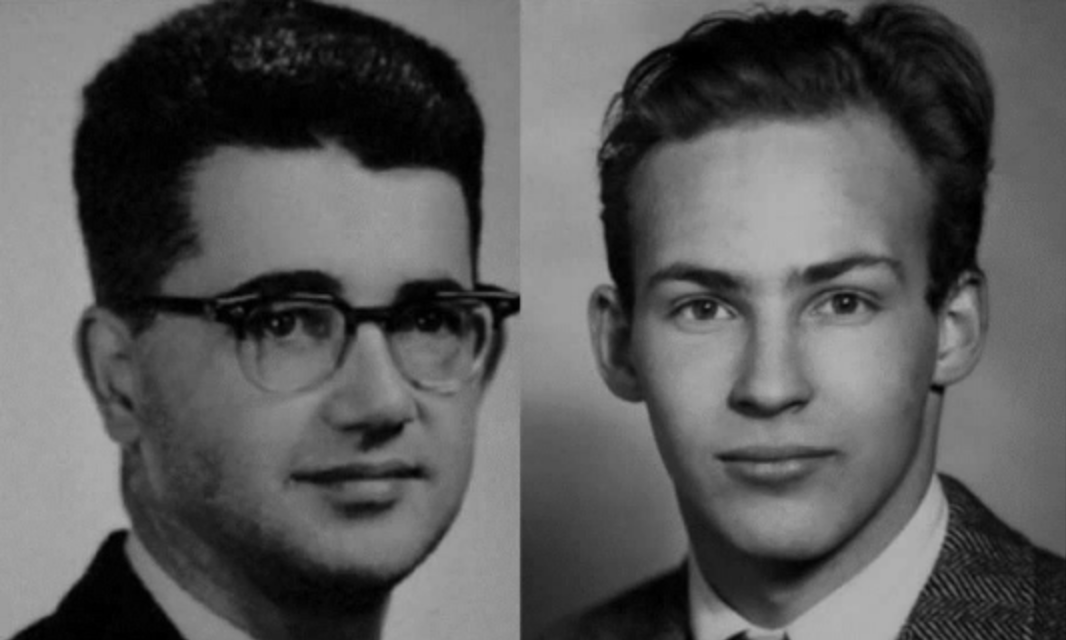
by Admin | Nov 12, 2021 | Chronicles, News
This week in The History of AI at AIWS.net – the MIT AI Lab was founded by John McCarthy and Marvin Minsky in 1959. This marked the beginning of coordinated AI research at MIT. The lab focused on researching and developing AI. The Lab went through several iterations and in 2003 merged with the Laboratory for Computer Science to become the MIT Computer Science and Artificial Intelligence Laboratory.
Marvin Minsky was an American cognitive and computer scientist. He penned the research proposal for the Dartmouth Conference, which coined the term “Artificial Intelligence”, and he was a participant in it when it was hosted in 1956. Minsky would make various contributions to the development of Artificial Intelligence. In terms of popular culture, he was an advisor to Stanley Kubrick’s acclaimed movie 2001: A Space Odyssey. He won the Turing Award in 1969.
John McCarthy was an American computer scientist. He, along with Minsky and others, co-wrote the proposal for the Dartmouth Conference, and participated in it. McCarthy also developed the Lisp programming language. Additionally, he also influenced various tasks in computer science. He spent most of his career at Stanford after working at Dartmouth and MIT. McCarthy won the Turing Award in 1971.
The History of AI Initiative considers the founding of the MIT AI Lab as an important event due to its role in the contribution to AI development. Furthermore, Marvin Minsky and John McCarthy are considered some of the founders of Artificial Intelligence research.

by Admin | Nov 5, 2021 | Chronicles, News
This week in The History of AI at AIWS.net – Herbert Simon and Allen Newell developed Logic Theorist in December 1955. Logic Theorist is a computer program that is considered to be the first AI program. The program was designed to perform automated reasoning, the first to be so intentionally. It was able to prove the first 38 theorems from the Principia Mathematica by Alfred North Whitehead and Bertrand Russell.
Herbert Simon was an American economist, political scientist, and cognitive scientist. In addition to Logic Theorist, he was known for research into decision-making in organisations and theories of bound rationality and satisficing. He worked at Carnegie Mellon University for the majority of his career. Simon received the Nobel Prize in Economics in 1978, and the Turing Award in 1975 for contributions to AI, human cognition, and list processing.
Allen Newell was an American researcher of computer science and cognitive psychology at the RAND Corporation and Carnegie Mellon University. He collaborated with Herbert Simon in developing Logic Theorist and General Problem Solver, some of the earliest examples of Artificial Intelligence. In 1975 He received the ACM Turing Award, the most prestigious award in computer science, jointly with Simon.
The HAI initiative considers the development of Logic Theorist as important in the History of Artificial Intelligence. It was a pioneering research that was pioneering in the study of AI. Logic Theorist would also influence concepts in AI research, such as heuristics and reasoning as search.
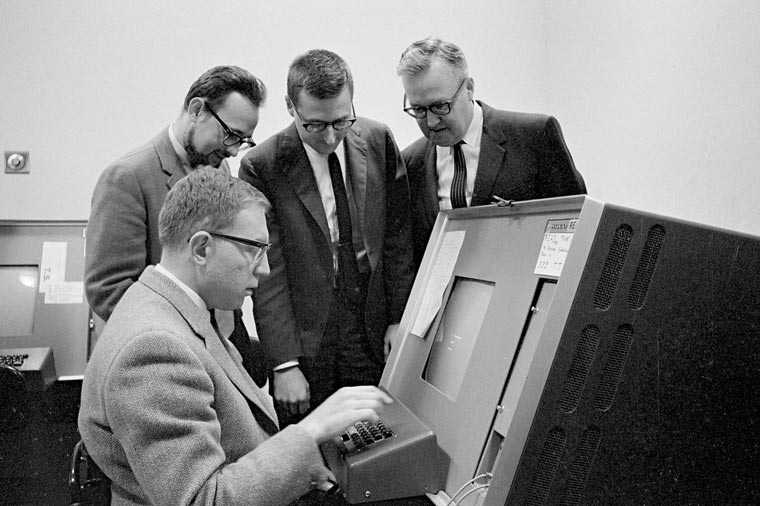
by Admin | Oct 29, 2021 | Chronicles, News
This week in The History of AI at AIWS.net – Edward Feigenbaum formally introduces expert systems in 1965. He was a part of the Stanford Heuristic Programming Project, which contained other notable AI pioneers.
Edward Feigenbaum is an American computer scientist focused on Artificial Intelligence. He studied at Carnegie Mellon University for both his B.S. and Ph.D., with Herbert Simon, an AI pioneer, as his doctoral advisor. He would go on to work at UC Berkeley and Stanford, the latter where he became Professor Emeritus of Computer Science (since 2000). Feigenbaum received the ACM Turing Award in 1994 with Raj Reddy for pioneering in AI and demonstrating its commercial potential.
The Stanford Heuristic Programming Project included members outside of Edward Feigenbaum such as Bruce G. Buchanan, Joshua Lederberg, and Carl Djerassi. They are most notable for the MYCIN experiments. Many of their papers and research can be read here.
Expert systems would become the basis for future AI products and developments. Furthermore, the members who were a part of this project would also work on other pioneering projects in A. Thus, the HAI initiative sees this event as a marker in the history of AI.

by Admin | Oct 22, 2021 | Chronicles, News
This week in The History of AI at AIWS.net – the sudden collapse of the market for specialised AI hardware in 1987. This is due to the fact that computers from Apple and IBM became more powerful than Lisp machines and other expert systems. In the 80s, specialised AI hardware such as Lisp machines became very popular due to its effectiveness in the corporate world. However they were expensive to maintain. By the end of the decade, computers by Apple and IBM had catched up with expert systems, per Moore’s Law, and also at a far cheaper price. Because now consumers no longer require the more expensive expert systems, there was a collapse for the market of such things.
This collapse of the market led to what is dubbed the Second AI Winter. The collapse coincided with the end of the 5th Generation Computer project of Japan and the Strategic Computing Initiative in the USA. The expensive nature of expert systems and the lack of demand led to slowdowns in development of that field. Companies that run Lisp went bankrupt or moved away from the field entirely. Thus, the winter spelled the end for expert systems as a major player in AI and computers.
Expert systems are computer systems that can emulate man’s decision-making abilities. They are designed to solve problems through reasoning and they can perform at the level of human experts. The first expert system was SAINT, developed by Marvin Minsky and James Robert Slagle. Lisp machines are designed to be able to run expert systems. Lisp machine runs the Lisp programming language, and in a way, it was one of the first commercial and personal workstation computer.
The fall of expert systems highlight lessons that are valuable for the History of AI and the current development of AI as well. It shows the failure to adapt by many in the AI field. The end of expert system in popular usage and the beginnings of the Second AI winter are also important milestones in the development of Artificial Intelligence. Thus, the HAI initiative consider this event an important marker in the history of AI.

by Admin | Oct 15, 2021 | Chronicles, News
This week in The History of AI at AIWS.net – the ACM named Yoshua Bengio, Geoffrey Hinton, and Yann LeCun recipients of the Turing Award in 2018 for breakthroughs that made deep neural networks critical in computing. The Turing Award is one of the most prestigious awards in the field, as it is often considered the Nobel Prize of Computer Science. Other winners include Marvin Minsky and Judea Pearl, both of whom made enormous contributions to Artificial Intelligence.
Yoshua Bengio is a Canadian computer scientist, most notable for his works on neural networks and deep learning. He is an influential scholar, being one of the most cited computer scientists. In the 1990s and 2000s, he helped make deep advancements in the field of deep learning. Bengio is also a Fellow of the Royal Society.
Yann LeCun is a French computer scientist, renowned for his work on deep learning and artificial intelligence. He is also notable for contributions to robotics and computational neuroscience. He is the Silver Professor of the Courant Institute of Mathematical Sciences at NYU. In addition, LeCun is the Chief AI Scientist for Facebook.
Geoffrey Hinton is an English-Canadian cognitive psychologist and computer scientist. He is most notable for his work on neural networks. He co-authored the seminal paper on backpropagation, “Learning representations by back-propagating errors”, in 1986. He is also known for his work into Deep Learning. Hinton, along with Yoshua Bengio and Yann LeCun (who was a postdoctorate student of Hinton), are considered the “Fathers of Deep Learning”.
The History of AI Initiative considers this award and the recipients important because they play an important role in Deep Learning, which is a field of Machine Learning, part of Artificial Intelligence. It is an acknowledgement of how far AI has developed, and thus, is a part of the History of AI.

by Admin | Oct 8, 2021 | Chronicles, News
This week in The History of AI at AIWS.net – “Computing Machinery and Intelligence” by Alan Turing was published in the Mind quarterly academic journal in October 1950. It was the first instance that the “Turing test” was introduced to the public. The paper takes the question “Can machines think” and breaks it down. The paper also addresses 9 objections and arguments against Artificial Intelligence – Religious, “Heads in the Sands”, Mathematical, etc. Turing wrote about a potential “Learning Machine” that could successfully bypass the Turing test.
The Turing test, also known as the Imitation game, can be used to tell machines from humans. It poses a hypothetical, where a human evaluator would judge conversations between a machine designed for human-like responses and a human; if the evaluator cannot identify the machine from the human, then the machine passed the test. The test has proven to be both influential and controversial.
Alan Turing was a British computer scientist and cryptanalyst. He developed the Turing machine, a model of a general-purpose computer, in 1936. During the Second World War, he worked at Bletchley Park (Government Code and Cyper School) as a codebreaker for the United Kingdom. At his time here, he would play a critical role in solving Enigma, Germany’s wartime infamous encryption system. Solving Enigma helped turning the tide of the war in favour of the Allies. After the war, he would go on to develop the Turing test in 1950. Alan Turing is widely considered the father of modern Artificial Intelligence, as well as being highly influential in theoretical computer science. The “Nobel Prize of Computing”, the ACM Turing Award, is named after him.
The History of AI initiative considers this event to be important due to “Computing Machinery and Intelligence” being a seminal paper in regards to both Computer Science and AI.
The paper introduces many new concepts in CS and AI to the general public. Alan Turing is a pivotal figure in the development of Artificial Intelligence, computing, and machine learning as well. Thus, the publication of this paper is a critical moment in the History of AI.
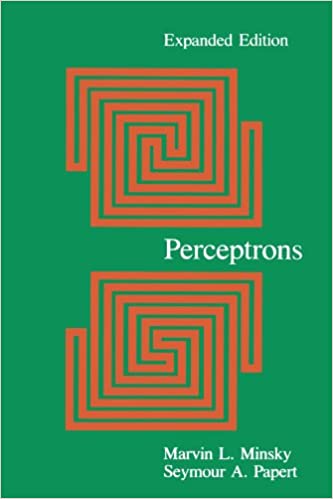
by Admin | Oct 1, 2021 | Chronicles, News
This week in The History of AI at AIWS.net – Marvin Minsky and Seymour Papert published an expanded edition of Perceptrons in 1988. The original book was published in 1969. The original book explored the concept of the “perceptron”, but also highlighted its limitations. The revised and expanded edition of the book added a chapter countering criticisms of the book made in the twenty years after its publication. The original Perceptrons were pessimistic in its predictions for AI, and was thought to have been a cause for the first AI winter.
Marvin Minksy was an important pioneer in the field of AI. He penned the research proposal for the Dartmouth Conference, which coined the term “Artificial Intelligence”, and he was a participant in it when it was hosted the next summer. Minsky would also co-founded the MIT AI labs, which went through different names, and the MIT Media Laboratory. In terms of popular culture, he was an adviser to Stanley Kubrick’s acclaimed movie 2001: A Space Odyssey. He won the Turing Award in 1969.
Seymour Papert was a South African-born mathematician and computer scientist. He was mainly associated with MIT for his teaching and research. He was also a pioneer in Artificial Intelligence. Papert was also a co-creator of the Logo programming language, which is used educationally.
The History of AI initiative considers this republication important because it revisited and furthered discourses on AI. The original book was also a cause for the first AI winter, a pivotal event in the history of AI. Furthermore, Marvin Minsky was one of the founders of AI. Thus, HAI sees Perceptrons (republished 1988) as meaningful in the development of Artificial Intelligence.
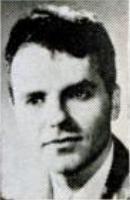
by Admin | Sep 25, 2021 | Chronicles, News
This week in The History of AI at AIWS.net – computer scientist James Robert Slagle developed SAINT in 1961. SAINT stands for Symbolic Automatic INTegrator. It was a heuristic program that could solve symbolic integration problems in freshman calculus. The machine was developed as a part of Slagle’s dissertation at MIT, with Marvin Minsky’s help. SAINT is considered the the first expert system. An expert system is a system that performs at the level of a human expert. SAINT was also one of the first projects that tried to produce a program that can come close to surpassing the Turing test as well.
James Robert Slagle is an American computer scientist. He worked on SAINT for his dissertation at MIT with Marvin Minsky. Slagle would receive his PhD in Mathematics from MIT later on in 1961. He’s a Professor in Computer Science with appointments in universities such as MIT, Johns Hopkins, UC Berkeley, and University of Minnesota.
Marvin Minsky also played a role in this project, as Slagle worked with him for this section of his dissertation. He would go on to be an important pioneer in the field of AI. He penned the research proposal for the Dartmouth Conference, which coined the term “Artificial Intelligence”, and he was a participant in it when it was hosted the next summer. Minsky would also co-founded the MIT AI labs, which went through different names, and the MIT Media Laboratory. In terms of popular culture, he was an adviser to Stanley Kubrick’s acclaimed movie 2001: A Space Odyssey. Minsky won the Turing Award in 1969.
The full dissertation can be found here. This project and dissertation is special in regard to AI, due to it being another step in its development, most notably for being the first expert system. Albeit it was only a minor project, the HAI initiative regards it as another pioneering attempt in the History of AI.









